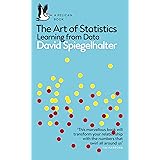R Recursive Functions-Quick Guide
R Recursive Functions, In its most basic form, recursion is a looping process. It makes use of the fundamentals of R’s functions.
When a function calls itself, this is referred to as recursion. This creates a loop in which the function calls itself over and over again, and this approach is known as recursion.
with() and within() Functions in R »
We utilize recursion because loops consume more memory. The recursive function uses the principle of recursion to conduct repeated activities, which they refer to as loops, over and over again.
These functions require a stopping condition in order to stop looping indefinitely.
Functions that call themselves are referred to as recursive functions. They divide the problem down into smaller pieces.
On each of the smaller components, the function() invokes itself within the original function(). The results will then be combined to solve the original problem.
Example: Factorial using Recursion in R
recfac <- function(x){
if(x==0 || x==1)
{
return(1)
}
else
{
return(x*recfac(x-1))
}
}recfac(10) 3628800
Rec fac(10) calls rec fac(9), which calls rec fac(8), and so on until the input argument x is equal to 1. The function returns 1 and is then removed from the system.
The argument value is multiplied by the return value, and the result is returned. This procedure continues until the output of the initial function call is returned, resulting in the final result.
Data Visualization with R-Scatter plots » finnstats
Example: Sum of Series Using Recursion
The sum of self-repeating series is the most practical application of recursion in R. We’ll find the sum of squares of a given set of numbers in this example.
Sum = 12+22+…+N2
Example:
sumseries <- function(vec){
if(length(vec)<=1)
{
return(vec^2)
}
else
{
return(vec[1]^2+sumseries(vec[-1]))
}
}Numbers<- c(1:5) sumseries(Numbers) [1] 55
Key Features of R Recursion
Recursion is frequently used to make code shorter and more readable.
For a few circumstances, it’s an easy solution.
It manifests as a self-calling function.
In R, recursion is used in a variety of ways.
Many efficient programming techniques, such as dynamic programming language (DSL) or divide and conquer algorithms, involve recursive functions.
Normality Test in R » How to Perform » Easy Steps »
Recursion is critical for performance in dynamic programming, including top-down and bottom-up approaches.
Divide and conquer algorithms break down an issue into smaller, easier-to-solve sub-problems. The output is then rebuilt from the bottom up.
Recursion follows a similar pattern, which is why it’s utilized to create algorithms like these.
Recursion is the process of breaking down a problem into many smaller issues, each of which is then broken down further until the problem is trivial. The solution is then pieced back together again.





